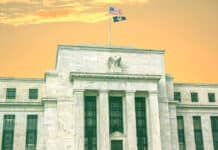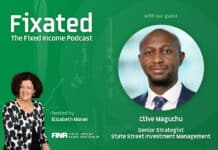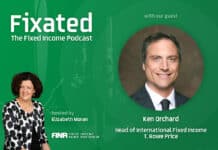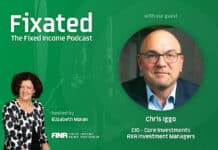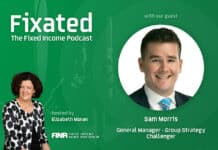
With the Federal Reserve in easing mode, the question many clients have been asking me is whether I still expect the 10‑year U.S. Treasury yield to head toward 6%. The short answer is yes. However, the recent move lower in Treasury yields has compelled me to reexamine my thesis for higher U.S. long‑maturity rates and a steeper yield curve. My simple conclusion is that, from a “linear” perspective of the normal drivers of Treasury yields, the only factor that has changed is the current yield level.
The three main factors supporting my higher yields thesis are still in place:
- Booming global developed market sovereign debt supply on lack of government austerity: Countries such as France are paying the price for fiscal indiscipline as investors force yields higher. But the U.S., despite similar largesse, hasn’t experienced anything like that pressure in the Treasury market—yet.
- Sticky inflation, with full tariff impacts probably still to come: Inflation hasn’t tracked as high as I had expected, but the latest evidence points to a broadening—not dampening—of inflationary pressures going forward. And while I certainly understand the case for a medium‑term disinflationary impact of artificial intelligence, we are not there yet. Finally, as political pressure poses challenges for Fed independence, inflation risk is surely increasing.
- Long‑maturity U.S. Treasury valuations are abysmal, relative to both cash and other developed market government bonds: The 10‑year Treasury note yielded only a handful of basis points above cash in early October.1 Why would investors forsake the safety of cash for such a measly yield pickup? While we have witnessed some steepening in the yield curve, that has been concentrated in the long‑maturity end of the curve—for example, between 5-and 30‑year yields. What really matters, however, is the comparison between cash and longer maturities, and so far, this dynamic hasn’t made Treasury notes much more attractive.
The lack of U.S. curve steepening relative to cash is also weakening the appeal of U.S. Treasuries in the global battle to attract capital. The U.S. Treasury yield curve just isn’t attractive for non‑U.S. investors unwilling to take on currency risk.
Market focusing on growth over inflation
The one driver of rates that has surprised me is that the market has become entirely focused on U.S. growth and the slowdown in the jobs market, ignoring the potential for resurgent inflation. I wrote earlier in 2025 in “Should we be more concerned about U.S. growth or inflation? Or neither?” about how the market narrative has moved back and forth between worries about growth and the labor market versus inflation concerns—the consensus is now firmly in the former camp.
I find it puzzling that the market consensus didn’t fully anticipate the potential for falling monthly jobs‑added numbers given how U.S. immigration policy has constrained labor supply. The “50 is the new 150” (number of monthly jobs added in thousands) narrative has been part of our analysis for a while now, reflecting the structural shift in labor market dynamics.
The employment market also appears to be drawing much of the Fed’s attention. I have no doubt there is some element of falling cyclical demand in the recent jobs numbers along with the creeping influence of new technology on labor demand.
Also read: Are Structural Spread Changes Concealing Value in Credit?
Recession talk is off the mark
In my opinion, talk of recession is simply misplaced. After all, most global central banks are cutting interest rates, and many countries have the fiscal taps open wide. In the U.S., massive deregulation and tax incentives are just starting to ramp up. I also suspect that the U.S. administration is laser‑focused on the country’s 250th anniversary next July as well as the 2026 midterm elections. The U.S. administration is likely to do whatever it takes for the economy to be humming along in the run-up to next summer.
The BIG risk
All the things I’ve described so far are “linear” drivers of Treasury yields. While I certainly don’t expect yields to increase in a straight line, a 5% 10‑year U.S. Treasury yield and eventually a 6% yield are well within the range of outcomes.
However, there may be an unusual, “nonlinear” outcome that could overwhelm these linear factors. This scenario involves the growing political pressure on the Fed to suppress long‑maturity yields. At his Senate Banking Committee confirmation hearing, new Fed Governor Stephen Miran talked of the third Fed mandate—achieving “moderate long‑term interest rates.”
With a new Fed chair arriving in May 2026, the risk of the central bank fundamentally influencing long‑maturity Treasury yields is a factor that we must bear in mind. While the consensus clearly expects lower short‑term rates under a new Fed chair, the potential for the Fed implementing some form of yield curve control to lower long‑term yields hasn’t yet received much airtime.
Think about what the Trump administration declaring a national housing emergency might mean in practice—the Fed could slow quantitative tightening or even return to buying agency mortgage‑backed securities (MBS) and Treasuries to drive down mortgage rates. I don’t know how the market would react in this scenario, but I think it might be wise to remember the old adage: “Don’t fight the Fed.”
Nonlinear scenario would create weaker U.S. dollar, higher inflation
So yes, I still think that longer‑maturity U.S. Treasury yields will be heading higher. However, if the Fed does actively intervene to push long‑term rates down, I suspect that the U.S. dollar would be the main financial casualty, with higher inflation the primary unintended economic consequence.










